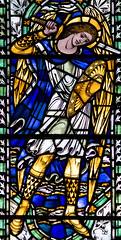So, the end of the world has not been a terribly edifying experience. (Hilarious certainly, but not edifying). It does seem to me though the issue has not always be stated clearly.
What stands out for me is not so much the prediction that the end of the world is nigh, as the confidence Harold Camping and his mates have that they are amongst the elect.
« April 2011 | Main | July 2011 »
May 2011
Saturday, 21 May 2011
Thursday, 05 May 2011
Wednesday, 04 May 2011
Tuesday, 03 May 2011
Monday, 02 May 2011
Sunday, 01 May 2011
CCblog Network
Categories
- Books (11)
- Climate Change (6)
- Conversations (122)
- Covenant (14)
- Culture (8)
- Current Affairs (15)
- Diversity (88)
- Ecclesiology (65)
- Economics (23)
- Ethics (36)
- Evolution (26)
- Exegesis (76)
- Formation (18)
- Global Ecumenism (16)
- History (28)
- Leadership (51)
- Local Ecumenism (62)
- Mission (43)
- Music (1)
- Mutuality (15)
- Neighbourhood: Projects (10)
- Neighbourhood: Theory (23)
- Orientation (14)
- Participation (19)
- Praxis (8)
- Reception (50)
- Religion (8)
- Sanctification (35)
- Science (39)
- Soft Systems (19)
- Stories (9)
- Theology (70)
- Theoretical Ecumenism (89)
- Weblogs (2)
Ecumenical sites
Sites for Transformation
Blogs for Transformation
Ecumenical posts
Featured books
Become a Fan
TypePad Profile
Get updates on my activity.
Follow me on my Profile.
November 2011
| Mon | Tue | Wed | Thu | Fri | Sat | Sun |
|---|---|---|---|---|---|---|
| 1 | 2 | 3 | 4 | 5 | 6 | |
| 7 | 8 | 9 | 10 | 11 | 12 | 13 |
| 14 | 15 | 16 | 17 | 18 | 19 | 20 |
| 21 | 22 | 23 | 24 | 25 | 26 | 27 |
| 28 | 29 | 30 |











Recent Comments